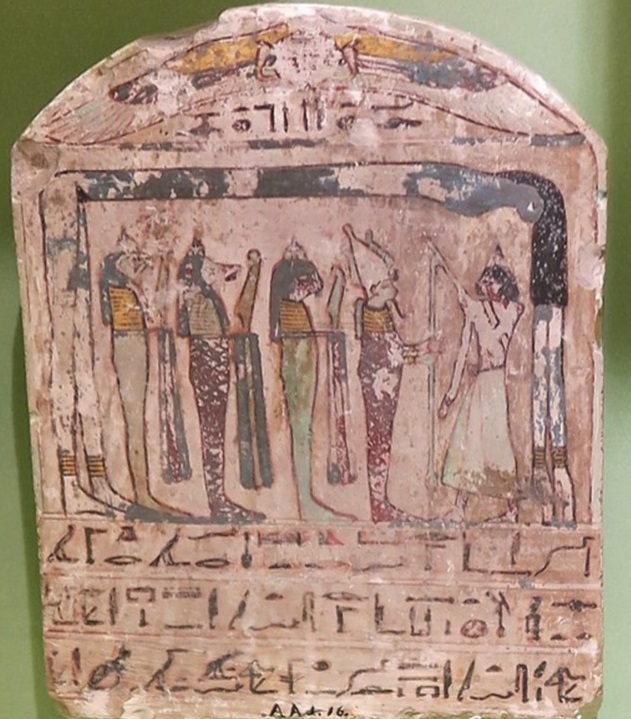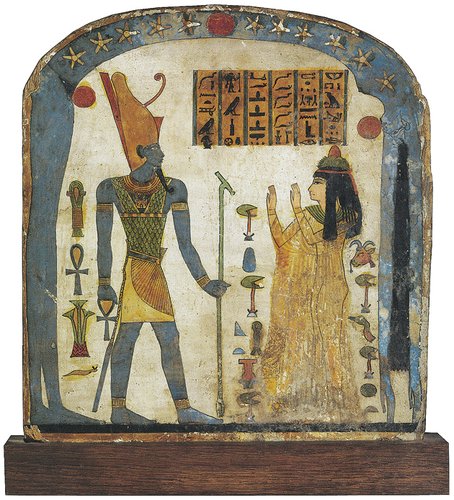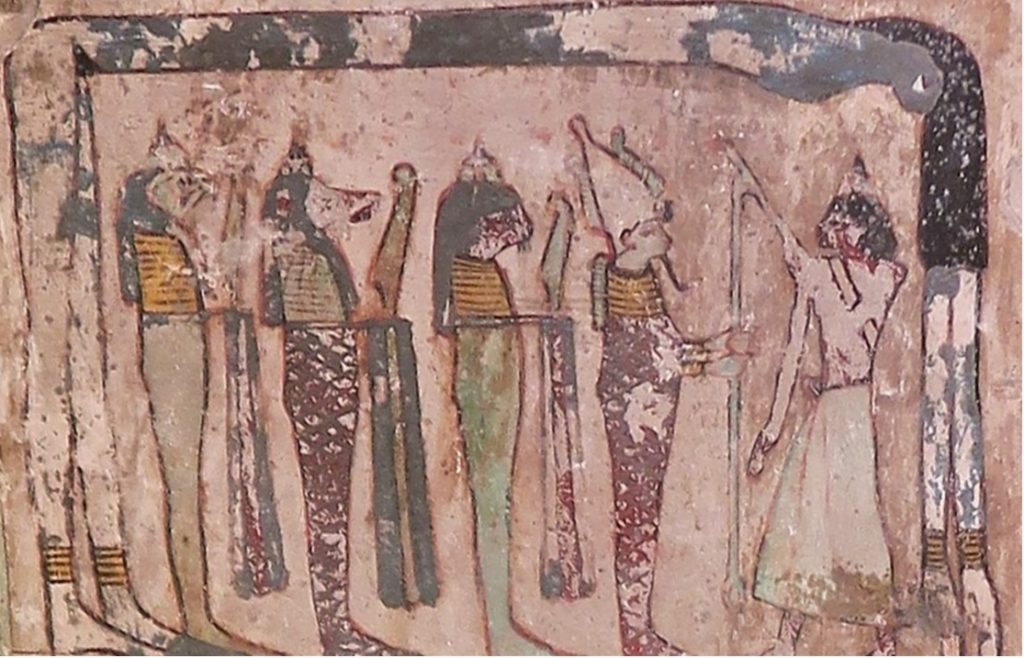There are lots of artifacts from ancient Egypt all around the world. Many of them are still unknown and despite that they are important documents.
Just surfing on internet I found this photo of a stele in the National Museum of Denmark in Copenhagen. I had no news of it and the style is really odd.
About the Stele.
According to the inscription it belonged to Ibi, a Butcher of Amoun. It seems that the piece comes from Luxor and dates from ca. 660 BC, so between the Third Intermediate Period and the Late Period.
It is a funerary stele whose owner, Ibi, was depicted adoring Osiris, the god of the underworld in ancient Egypt.

About the decoration.
The sky in the stele of Ibi.
The shape follows the typical one in ancient Egypt with the rounded top, as an allegory of the celestial vault.
But in this funerary stele there are two more references to heaven as upper space. One with Horus of Behdet. The Behdetite had the image of the winged sun disk and was a manifestation of Horus in ancient Egypt.
Second with the image of Nut, a deity with many roles in ancient Egypt. She was mainly the sky goddess, represented as a woman arching over her husband Geb, the god of the earth.
Nut bending and dishevelled.
But she was also closely conected with maternity. On one hand, she swallowed every night the sun and gave birth ot it in the morning. On the other hand, she was the mother of Osiris in the Ennead of ancient Egypt.
Due to that it was considered in ancient Egypt that Nut contributed in the dead’s resurrection. For that reason we find many coffins with the image of Nut inside the lid with reaised arms and dishevelled hair.

To dishevel the hair was called the nwn m gesture in ancient Egypt and it was a gesture made during the mourning rite. It consisted in dishevelling the mane of hair forwards and cover the face with it. (Read more in “Hair and Death in Ancient Egypt“)
In the funerary belief of ancient Egypt Nut also did this gesture of covering the face with the hair to give birth the dead, who was inside the coffin. (You can read more on this topic in “Hair is Maternity in Ancient Egypt“.
Nut in the stele of Ibi.
We have evidency of this image also in the stele of lady Taperet of the Dynasty XXII. The goddess Nut as the sky is on the top forming the vault of heaven bending forwards and with the hair falling down.
There is also a similar scene in the coffin of Uresh-Unefer from the Late Period. We see in it a relief with late version of the same scene with Nut onwards and with a suspended lock of hair.
In the stele of Ibi the bending image of Nut also appears making the same gesture, but with a very rough manufacturing. The straight body lines of the goddess contrast with the rounded top; a real artist of ancient Egypt would have depict the body of Nut arched, following the sape of the piece.

Moreover the goddess has no face at all, the the hairline is not on the nape, but on the back and the mane is covering the arms in an unusual way for ancient Egypt.
Ibi and the missing god.
There is also a peculiarity in this decoration. Ibi is depicted adoring a group of gods of the funerary sphere. It was quite common in ancient Egypt to depict the dead adoring the images of Osiris followed by the Four Sons of Horus (canopic jars): Imset (human+liver), Duamutef (jackal + stomach), Qebehsenuef (hawk + intestines) and Hapy (baboon + lungs).
Howoever in the stele of Ibi, there are just three sons of Horus. Apparently Hapy (the baboon) is missing. Why?
Again here the rough manufacturing and the lack of a main character is quite rare.